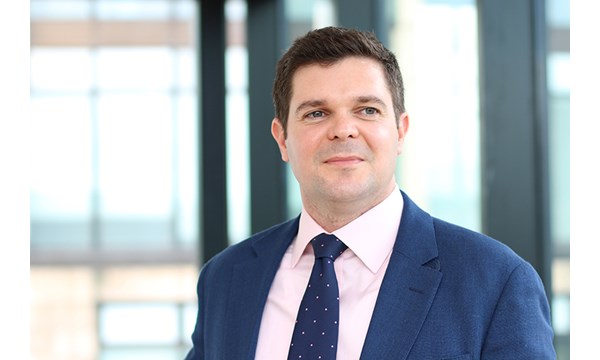Big ambitions but slow progress: global hydrogen market developments in Q4 2023
Capacity continues to grow, with giga-scale proposals dominating, but many projects remain speculative, with delays and cancellations likely
5 minute read
Murray Douglas
Vice President, Hydrogen & Derivatives Research

Murray Douglas
Vice President, Hydrogen & Derivatives Research
Murray is responsible for Wood Mackenzie’s global coverage across the hydrogen value chain.
Latest articles by Murray
-
Opinion
Our top takeaways from the World Hydrogen Summit
-
Opinion
eBook | The hydrogen opportunity from now to 2050: what utilities and developers need to know
-
Opinion
eBook | The hydrogen opportunity from now to 2050: what industrial players need to know
-
Opinion
eBook | Investing in hydrogen from now to 2050: what you need to know
-
Opinion
What lies ahead for hydrogen and low-carbon ammonia?
-
Opinion
Ebook | Overcoming the challenges around hydrogen deployment
Greig Boulstridge
Research Analyst - Hydrogen & Derivatives

Greig Boulstridge
Research Analyst - Hydrogen & Derivatives
Greig is responsible for market tracking and ensuring data quality in Wood Mackenzie’s Lens Hydrogen platform.
View Greig Boulstridge's full profileThe hydrogen picture from the final quarter of 2023 is somewhat mixed. Q4 delivered record growth in announced production capacity around the world, with green hydrogen dominating, and a raft of new policies lending weight to many countries’ ambitions.
The news should be interpreted with caution, however. Giga-scale projects continue to dominate, with almost half of all announced capacity coming from just 49 project phases. Many of these projects are likely to encounter significant barriers to development in their given timeframes, particularly those in undeveloped markets.
Macroeconomic headwinds, policy uncertainty, cost inflation, and the slow emergence of offtake opportunities have all taken a toll. Our research reveals that developer confidence is low, as many projects are struggling to reach a Final Investment Decision (FID). Fill in the form at the top of the page to download your complimentary copy of our Hydrogen Market Tracker Q4 report, or read on for a summary of the key takeaways.
Financial challenges and project delays
Development costs for hydrogen and renewables projects increased significantly during 2023, and on top of this, developers have struggled to secure funds. These novel and relatively unproven technologies, often targeting new customer groups, are understandably considered risky prospects. With funding difficult to come by, costs on the up and regulatory decisions still in the air, project delays and cancellations have been widespread – a pattern which is likely to continue.
The impact of regulatory and financial challenges could be seen in the cancellation of Project Cavendish, a 0.26Mtpa (million ton per annum) blue hydrogen project planned for the UK. The developing consortium blamed uncertainty around the UK’s government support for hydrogen blending. Technical and economic challenges were also given as reasons for the cancellation.
In the USA, Nutrien suspended work on its Geismar project, which is set to produce 1.2Mtpa of blue ammonia, for at least two years. Nutrien explained that the delay is due to increased capital costs and uncertainty over the emergence of offtakers for its low-carbon ammonia.
Meanwhile, China has cancelled five hydrogen developments, including a $2.9bn project, initially planned to produce 0.1Mtpa of electrolytic hydrogen. The project was cancelled to free up development space and resources for other projects.
Despite a limited number of FIDs being taken, 2023 did deliver some reasons to be hopeful. Saudi Arabia’s Public Investment Fund and ACWA, in partnership with Air Products, reached FID on the $8.5bn NEOM Helios Green Fuels Project. The megaproject will produce 0.23Mtpa of green hydrogen, which will then be used to produce green ammonia. Air Products will act as the sole offtaker for the full project output.
In addition, Chinese Energy Engineering Corp (CEEC) took FID and began construction on a 640 MW green hydrogen plant. The plant is set to run on 800MW of renewables and aims to produce 45,000tpa of hydrogen, which will be used to produce 0.2Mtpa of ammonia, and 20,000tpa of e-methanol.
Capacity announcements
Q4 2023 delivered record growth in announced capacity, with green hydrogen (by electrolysis) taking the greatest share. 12.7Mtpa of capacity was announced, bringing the global total to 120.5Mtpa. Capacity announcements around the world have been dominated by production hubs and megaprojects, and new projects were mainly in export-focused markets, particularly North Africa.
While the average announced capacity in Africa and South America exceeds other regions, very large announcements in less developed markets should be treated with caution. Export-focused markets are often host to a small number of very large projects, inflating the total announced capacity of the region. In truth, most of these projects – which dominate many national project portfolios – will struggle to progress due to issues securing financing, a lack of policy support, challenges in securing offtakers, and underdeveloped supporting infrastructure.
Export projects everywhere are struggling to progress to FID, but China and Europe continue to have the most capacity under construction. It’s striking that just 2% of global announced capacity is under construction or operational.
Export-focussed projects account for 44% of announced capacity, however getting going by their 2030 target will depend on a demand boost from import markets. With over half of global capacity announcements speculative, and announcements outpacing developments, it’s clear why these projects are considered high risk.
New policies around the world
The past year has seen policy updates, awards and state-level developments around the world. In the US, the long-awaited 45V treasury guidance was published, setting out three pillars of hydrogen production. See our full report for the details of the 45V guidance, which we expect to cause delays and cancellations for some US projects. It will create challenges for participants along the value chain, who must now change their approaches to hydrogen project deployment. The resulting delays and cancellations will impact electrolyser manufacturers in North America, and with costs remaining higher for longer, US developers may look to low-cost Chinese electrolysers.
Japan announced $21Bn allocated to hydrogen and ammonia subsidies and the UAE has rolled out strategies for hydrogen and sustainable aviation fuels (SAF).
Keeping up with changing policies will be crucial in the race to scale up hydrogen. Since cost is the primary barrier facing the global low-carbon hydrogen market, financial support mechanisms such as CfD schemes and tax incentives are becoming a foundational component of policy readiness.
Electrolyser manufacturing
Given all the challenges impacting electrolytic hydrogen projects this year, it is perhaps not surprising that manufacturing capacity announcements slowed dramatically in Q4, following rapid growth over the previous four quarters.
China is shaping up as an increasingly powerful force in global electrolyser manufacturing, and is likely to scale up its manufacturing capacity more quickly than Europe and North America – possibly capturing a sizable share of the market. However, doubts have been raised over performance and reliability. Sinopec’s 260MW Kuqa project, for example, has encountered technical issues and is currently operating at less than a third of installed capacity.
Meanwhile, ambitious new entrants are promising to deliver unprecedented scale despite alarm bells still ringing around a potentially massive oversupply of electrolysers in the near to medium term – but the overall message from our Q4 hydrogen research is that if it seems too good to be true, it probably is.
For much more about offtake agreements, new policies, progress to FID and more, fill in the form at the top of the page to download your complimentary copy of our Hydrogen Market Tracker Q4 report.







